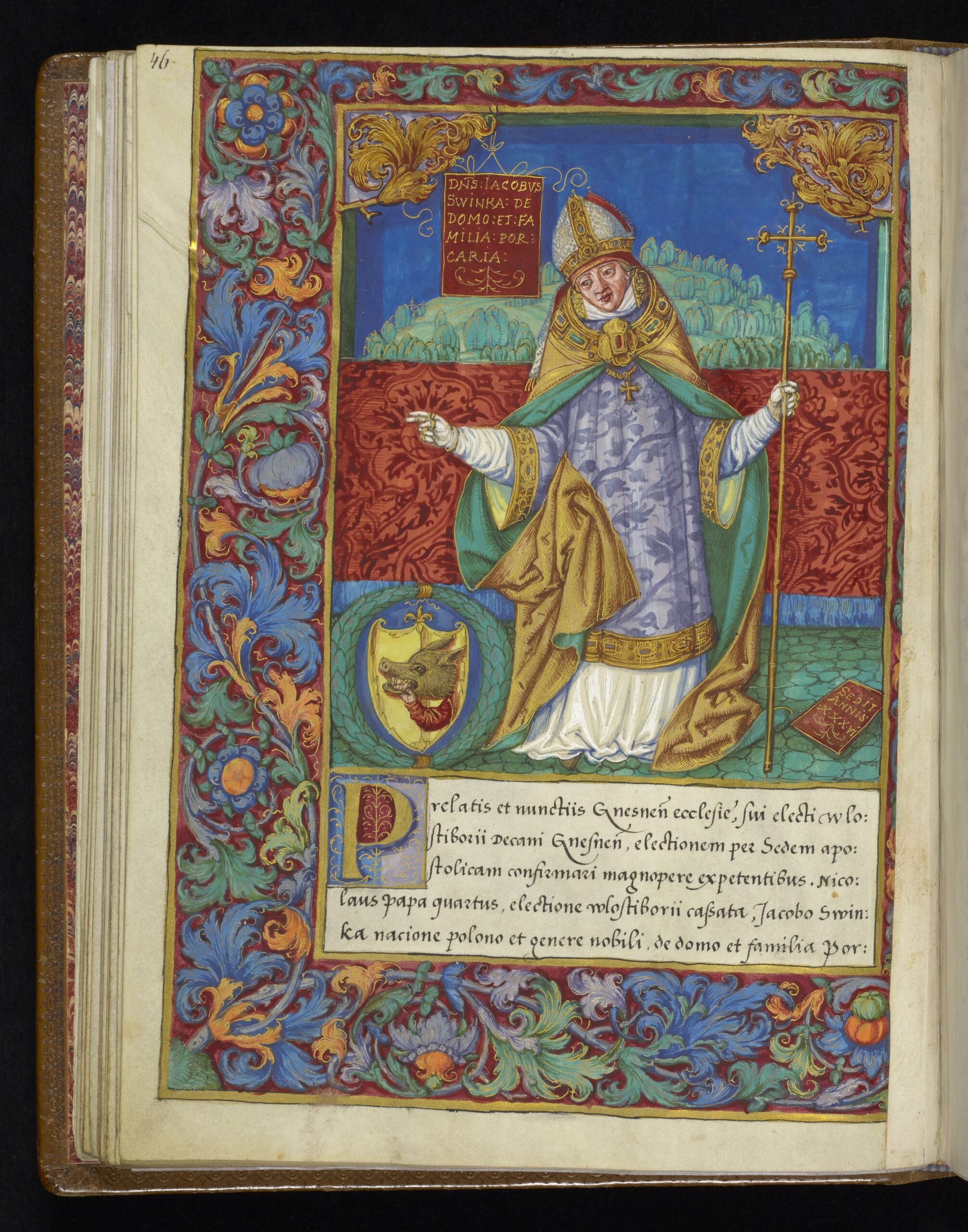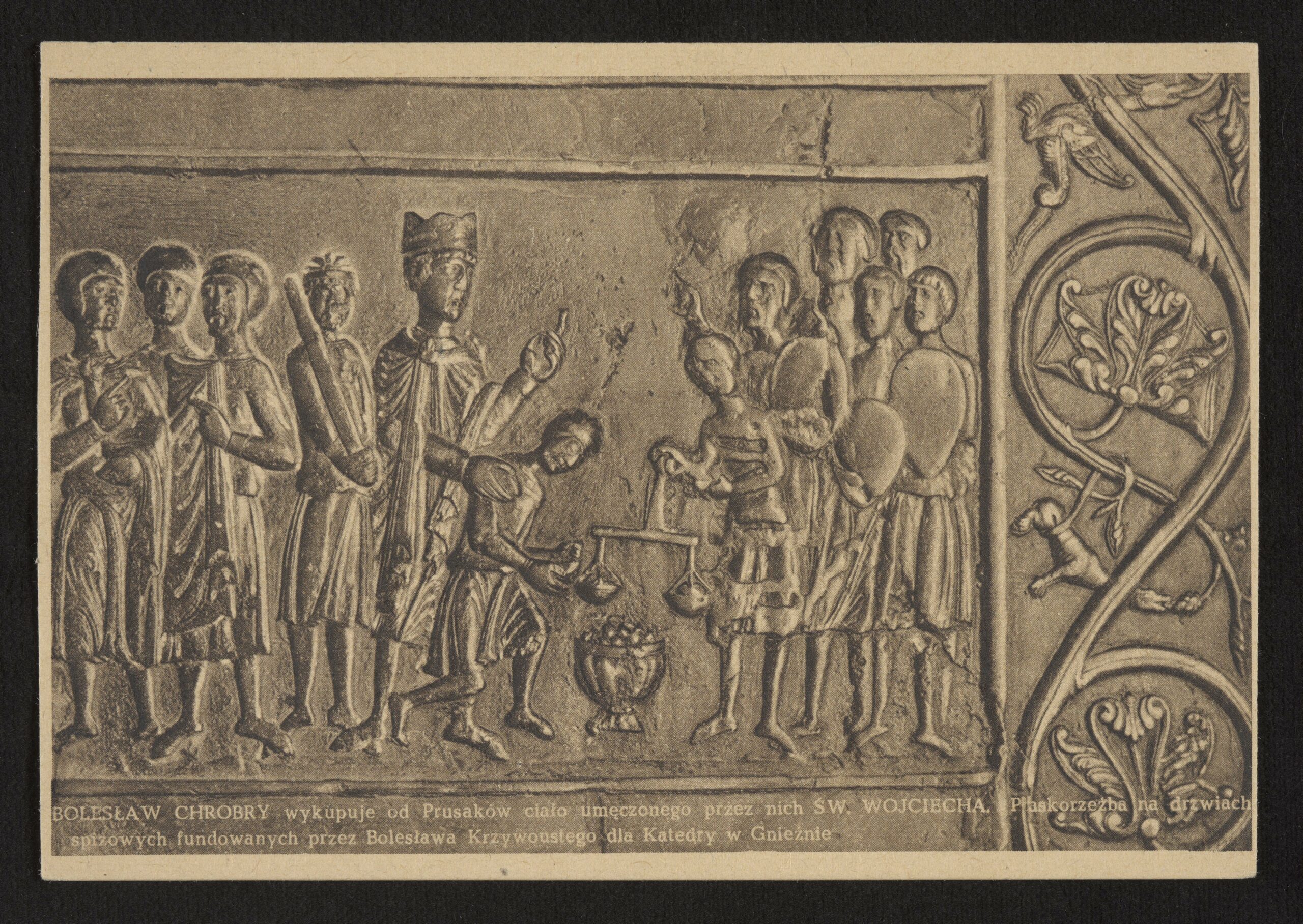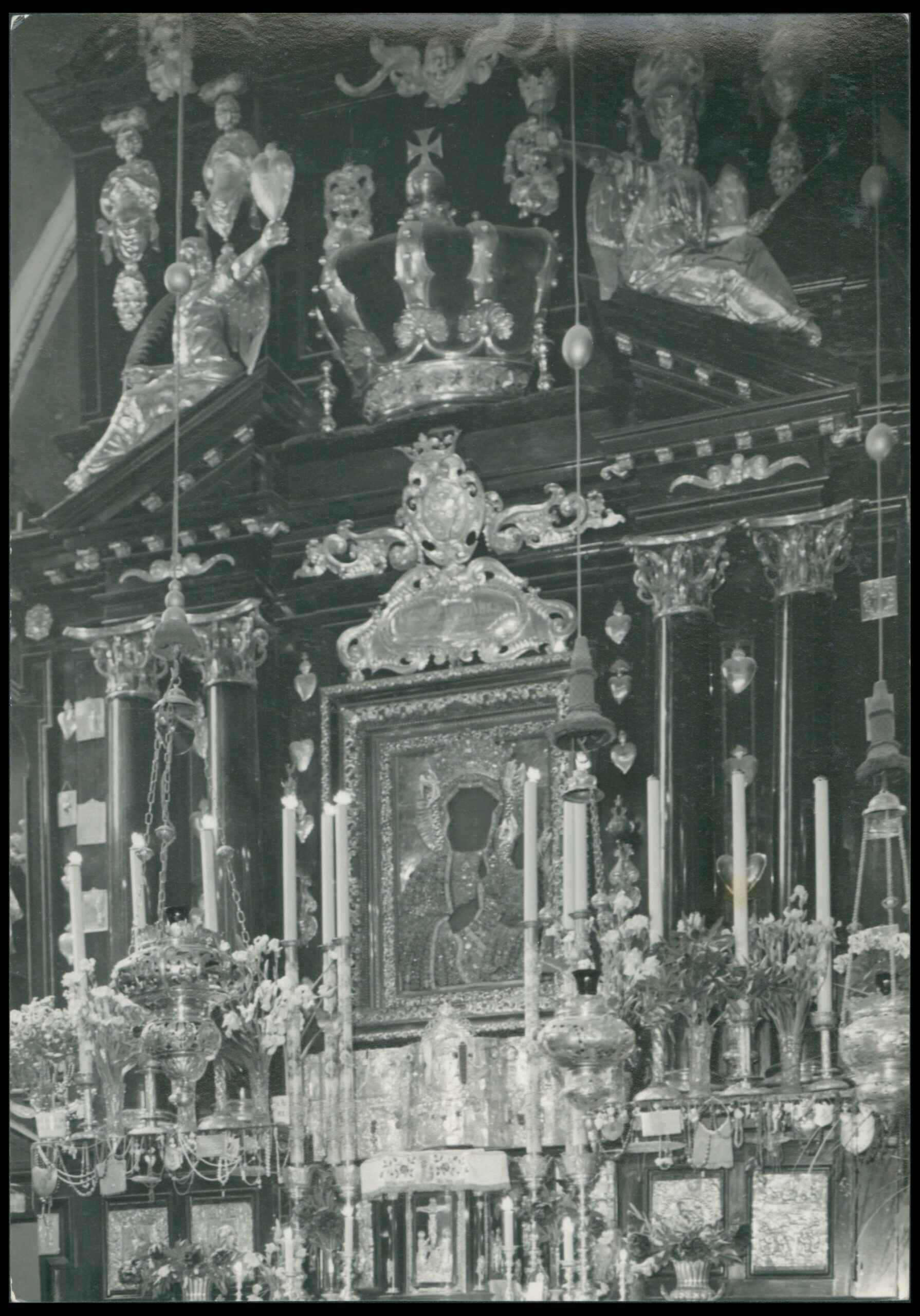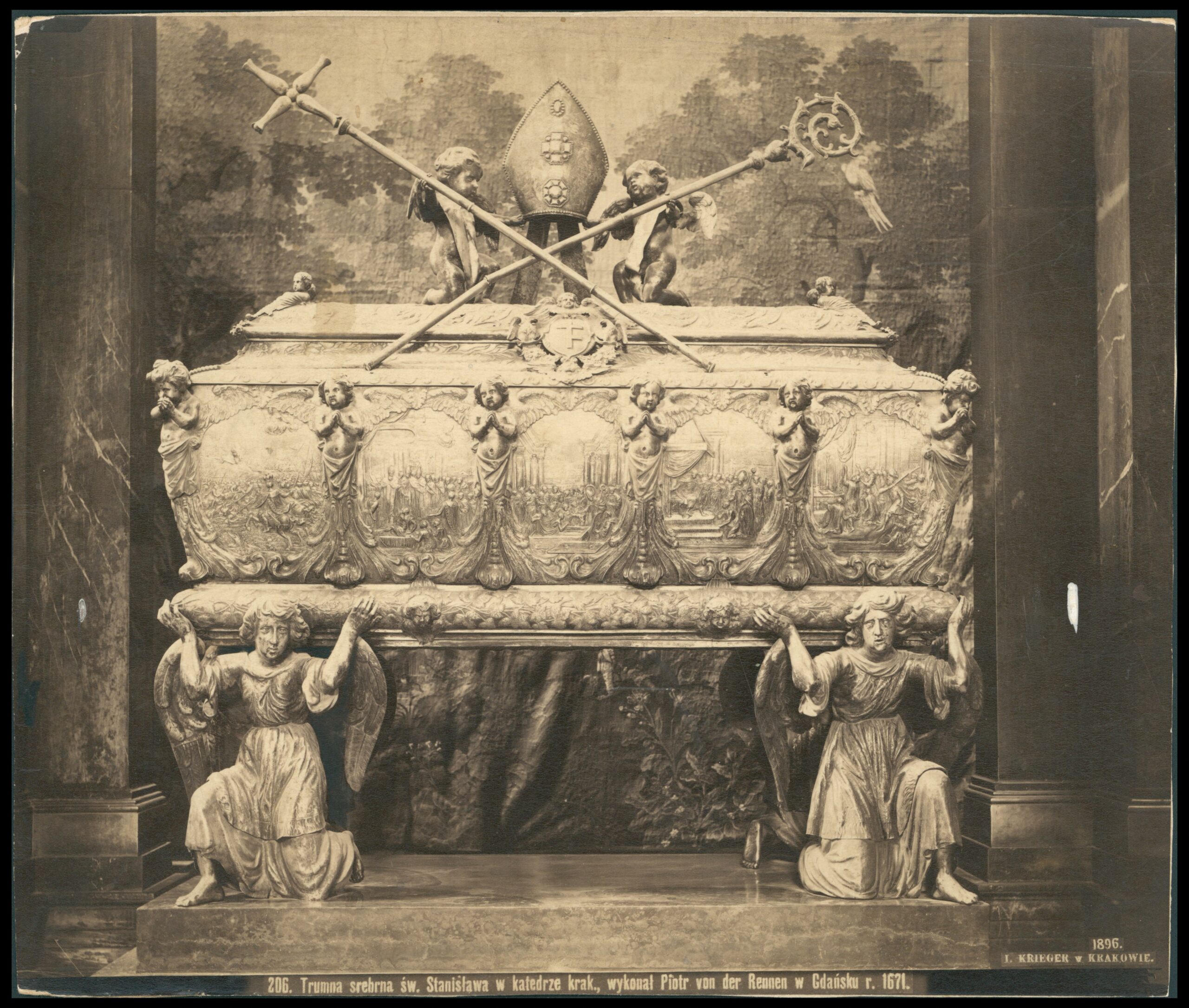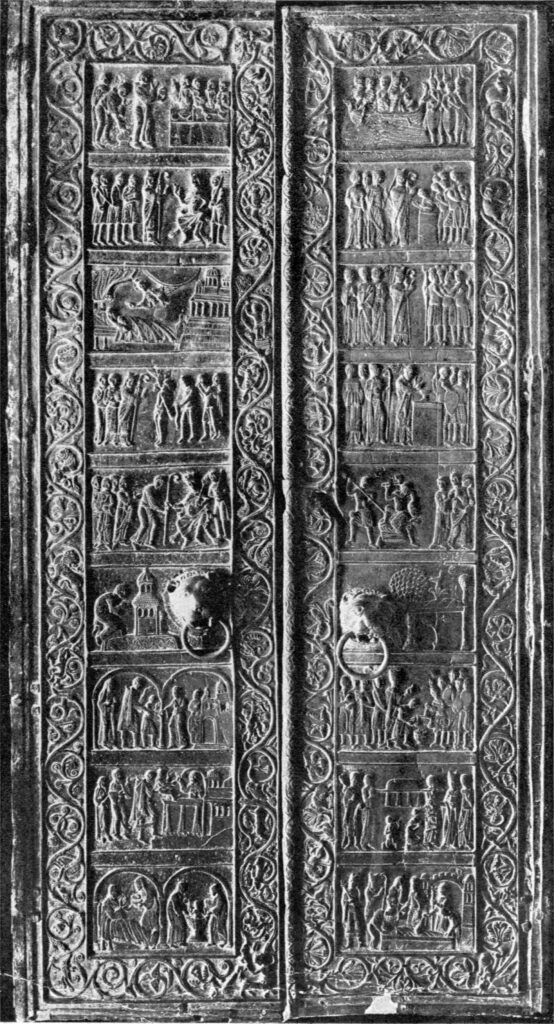
St. Adalbert – Gniezno Cathedral
Polish figure of the „The patrons and guardians of the land” topic
St. Adalbert, born Vojtěch of the noble Slavník family, became the Bishop of Prague in 982 AD. His efforts to reform the Church and promote Christianity faced resistance at home but gained recognition abroad, particularly in the Kingdom of Poland. His close ties with the Polish ruler, Bolesław Chrobry (Boleslaus the Brave), were instrumental in his missionary work and subsequent veneration. Adalbert’s mission led him to Prussia, where he met martyrdom in 997, killed by those who opposed his teachings.
The significance of St. Adalbert within Europe extended beyond his martyrdom. His body, bought back from the Prussians by Bolesław Chrobry for its weight in gold, became a symbol of the sanctity and sovereignty of the newly Christianized Polish state. This act of ransom was not only a demonstration of piety but also a strategic move by Chrobry to enhance his realm’s prestige. By securing the relics of such a revered figure, Chrobry linked Poland indelibly to the broader Christian world, boosting its religious and political status.
This strategic sanctification reached its zenith during the Congress of Gniezno, which took place in 1000 AD. The congress was a pivotal moment in medieval Polish history, attended by the Holy Roman Emperor Otto III. Otto’s pilgrimage to St. Adalbert’s grave underscored the significance of the saint’s cult and its centrality to the Christian identity of the region. Otto’s visit not only solidified the spiritual bonds between the Kingdom of Poland and the Holy Roman Empire but also elevated Bolesław’s standing among European rulers – Emperor Otto III symbolically placed his own diadem on his temples.
The Congress of Gniezno led to the establishment of an archbishopric in Gniezno, further affirming the ecclesiastical independence of Poland from the German church hierarchy. This was a crucial step in the consolidation of Polish national and religious identity, with St. Adalbert at its spiritual core. His veneration as a patron saint reinforced the notion of divine guardianship over the Polish lands.
St. Adalbert’s legacy as a guardian of the land and a bridge between cultures remains profound. His life and posthumous influence encapsulate the complex interplay of religion, politics, and cultural identity in medieval Europe. Through his martyrdom and the strategic use of his legacy by leaders like Bolesław Chrobry, St. Adalbert remains a lasting symbol and cultural heritage of Poland till today.
Further reading
Labuda, G. (2000). Święty Wojciech : biskup-męczennik, patron Polski, Czech i Węgier. Wrocław.
Michałowski, R. (2016). The Gniezno Summit : the religious premises of the founding of the Archbishopric of Gniezno. Leiden.
Berend, N. (2010). Christianization and the rise of Christian monarchy : Scandinavia, Central Europe and Rus’ c. 900-1200. Cambridge.
Facts


